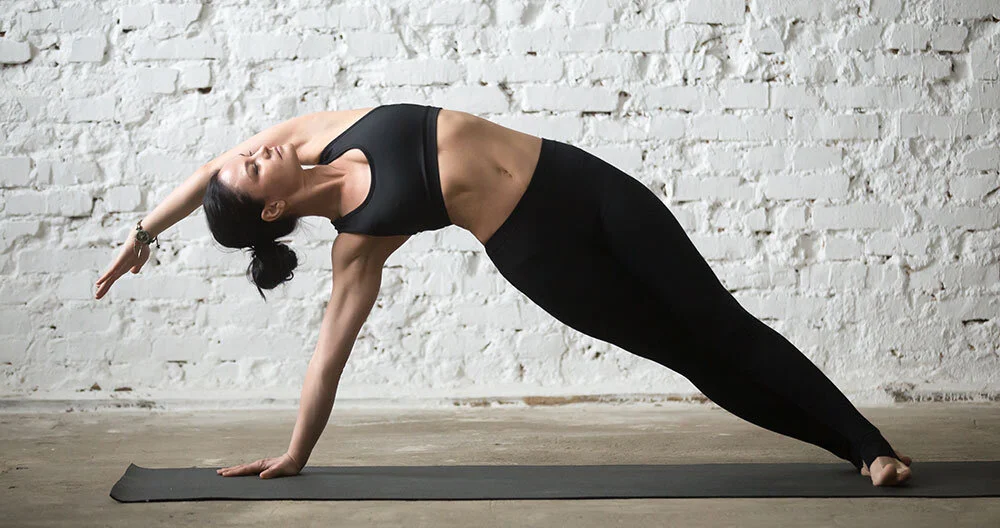The Best Ballet Exercises for Core Strength
A strong core is at the heart of every movement in ballet. It supports posture, balance, and control - and it is just as vital for everyday life as it is for dance. Whether you are lifting a shopping bag or lifting your leg into arabesque, your core muscles are working hard to stabilise you.
These ballet-based exercises focus on deep core engagement: Strengthening not just your abs, but also the muscles that support your spine and pelvis.
1. Bridge with Turnout
How to do it:
Lie on your back with your heels together and toes turned out (small first position).
Place your arms by your sides, palms down.
Inhale to prepare.
As you exhale, engage your core and lift your hips slowly towards the ceiling, creating a long diagonal line from shoulders to knees.
Inhale to lower halfway down, keeping your glutes slightly engaged, then exhale to lift again.
Reps: 10–12.
Focus: Keep your ribs drawing in and your pelvis neutral - avoid arching your lower back.
Benefit: Strengthens the deep core, glutes, and inner thighs while training pelvic stability.
2. Leg Lowers (with Port de Bras)
How to do it:
Lie on your back with your legs extended towards the ceiling in first position (heels together, toes turned out).
Arms are extended overhead in fifth position or gently resting by your sides.
Inhale to lengthen, then exhale to slowly lower both legs to a 45-degree angle, keeping your lower back gently pressing into the mat.
Inhale to return to start.
Reps: 8–10.
Focus: Keep your navel drawing towards your spine throughout - if your back lifts, reduce the range of motion.
Benefit: Strengthens the lower abs, improves control, and promotes graceful alignment through the centre line of the body.
3. Pilates-Inspired Ballet Curl
How to do it:
Lie on your back with your knees bent and feet in first position.
Extend your arms along your sides, palms down.
Exhale as you lift your head, neck, and shoulders off the mat, reaching your fingers towards your heels.
Inhale to lower back down slowly.
Reps: 10–12.
Focus: Keep your shoulders relaxed and your ribs drawing inwards to deepen core activation.
Benefit: Strengthens upper and lower abdominals with ballet precision and control.
4. Side Extension with Arm Reach
How to do it:
Sit tall with your legs in a soft second position (slightly wider than hips).
Extend one arm overhead and the other to the side.
Inhale to prepare, then exhale as you lengthen and tilt over to the side, feeling a stretch through your waist.
Return to centre and repeat on the other side.
Reps: 6–8 each side.
Focus: Keep both hips grounded and lift through the crown of your head.
Benefit: Strengthens the obliques and improves spinal flexibility.
5. Plank with Tendu
How to do it:
Start in a forearm plank with your body in one straight line.
Point one foot and gently sweep it out to the side and back to centre, keeping hips level.
Alternate sides with control.
Reps: 8–10 each leg.
Focus: Keep your core lifted, glutes engaged, and movements small and precise.
Benefit: Builds endurance in the deep core muscles and promotes full-body strength.
Putting It All Together – A Simple Core Routine
Perform each exercise once through as a circuit, then repeat the full sequence 2–3 times depending on your level.
Suggested routine:
Bridge with Turnout – 10–12 reps
Leg Lowers – 8–10 reps
Ballet Curl – 10–12 reps
Side Extension – 6–8 each side
Plank with Tendu – 8–10 each leg
Finish with a gentle seated twist and forward stretch to release the spine.
Why Ballet Core Workouts Are So Effective
Ballet trains the body to move from the centre – every lift, balance, and turn begins in the core. These movements build strength, grace, and alignment, helping you feel more supported both in class and in daily life.
With consistency, you’ll notice improved posture, a taller stance, and a sense of lightness that comes from a strong, well-connected centre.


